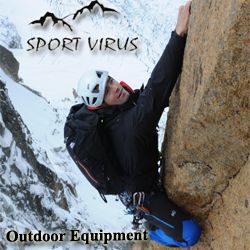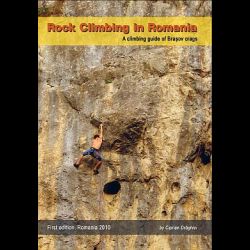Details about area Masivul Piatra Mare

Highlights: Piatra Mare Mountains is the home of two well-known crags of Brasov Region: the classic Prapastia Ursului crag and the newly opened Tamina crag.
Climbing: Prapastia Ursului crag is one of the oldest and most well-known in the nearby area of Brasov town. Here you'll find sport climbing or alpine routes, as well as dry-tooling lines. The limestone rock hosts a great diversity of features from compact faces, cracks and chimneys to impressive overhangs. The routes are long and most of them have two pitches. The Tamina waterfall, located in the Piatra Mare Massif, is one of the newest climbing crags of Romania: the first climb was completed in 2006. The canyon of the Tamina River splits the area in two distinct parts. You can go through the canyon without any special equipment on the pre-laid ladders. The limestone rock is mostly face climbing with short overhanging sections. The routes are long and sustained and will amaze you with their variety and beauty.
Getting here: Piatra Mare Mountains are located in the Southern outskirts of Brasov town. There are daily trains from any of the major cities of Romania to the town of Brasov. Driving to Brasov is a viable option due to city position in the centre of Romania and the fact that the road network improves day by day. Nevertheless, if you are driving from the Southern part of Romania you may expect traffic jams along the Prahova Valley especially during week-ends. From Brasov, drive on the national road DN1 towards Bucharest and just after you exit from Brasov you will see on your left side Piatra Mare Massif. The drive time is less than 30 minutes.
Accommodation: If you are going to climb in Piatra Mare Massif, we recommend to stay overnight in Brasov.You can find various types of accommodation in Brasov such as guest houses, hotels or hostels. You'll find most of the accommodation places located in the old town centre. The price for a double room at a guest house is about 100 lei (EUR 25). For those who wish to camp or use a bungalow, the Dirste camping is located on the Southern outskirts of Brasov.
Where to eat: Certainly, the diversity and authenticity of the gastronomic experience of this area will be unforgettable, especially for those who visit Brasov for the first time. Here are some of the local specialities: sarmalute (meat and rice rolled in boiled cabbage), mici (grilled rolled meat), tochitura (stew from internal organs), ciorba de burta (tripe soup) or papanasi (cheese doughnuts with cream and jam). The best restaurants can be found in the old town centre. Some well known ones are: Casa Hirscher, Butoiul Sasului, Sergiana, Bella Musica or Ceasu' Rau but there are many others for you to choose. Vatra Ardealului patisserie is renowned for the most delicious cakes and sweets.
What to see: Brasov and its surroundings are an ideal place to learn more about the local traditions of the inhabitants. You can't miss the visit of the old Schei residential area, where you can still admire the old medieval houses that guard the narrow and zigzagging small roads of this old settlement. The most panoramic view of the town is from the top of the Tampa Mountain. You can reach the top by cable car, or by walking on the one of the many forest trails. Located 30km South of Brasov is Bran Castle, one of the most famous medieval castles of Romania, and also a popular tourist attraction for those wishing to glimpse Dracula's Castle. You can admire here the traditions and the popular customs preserved unaltered throughout the centuries. If you feel in the mood to have a day-trip farther in the South of Brasov, don't miss the Sapte Scari canyon in the Piatra Mare Mountains or the strangely wind and water shaped rocks Babele and The Sphinx in the Bucegi Mountains. Those passionate about history must not miss the visit of Peles Castle in Sinaia.
Where to buy gear: The most known climbing gear stores are in Brasov: Himalaya and Explorer on Republicii Street and Sport Virus on George Baritiu Street. You can reach all of them from the old town centre, Piata Sfatului in no more than 5 minutes walking.
Climate: The ideal season for climbing in Piatra Mare is from May until September. Most of the crags have Southern or South-Western exposure with ideal condition for climbing. Early in spring you may find water infiltrations on some of the routes. The average summer temperature is between 22 and 27 degrees Celsius. The rainiest month is June. During winter time, because of the alpine climate specific to the mountain areas,climbing in open air is rarely possible and only if the weather conditions are favourable: dry weather, sun and no wind.
Crag List
60'
25'
Cascada Tamina
55'
15'
Prapastia Ursului
35'
15'
Valea Chiva
90'
15'




